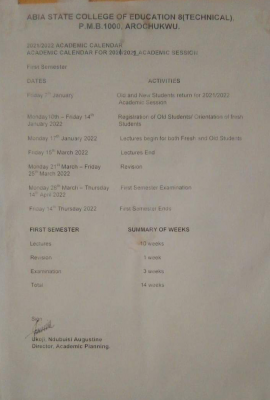
Apply Now! - As a university student, it is almost certain that you have tried to find the best way to face your day-to-day studies. Some students have the innate ability to concentrate or remember everything they hear. Others find it easier to take many notes during the lecture so they can revisit them multiple times after class. Everyone is different and there are many different ways that students can learn today. The one-size-fits-all method of teaching is no longer the way to go, and this article will attempt to suggest a few study methods you can use to improve your learning experience in an evolving learning environment.
The Basic study methods
Let’s start with the simple ways you can improve your learning experience yourself first.
These methods are ways to change the way you face your studies to improve performance and increase productivity.
1) Organise Your Time
This might be quite an obvious tip, however, many students struggle with time management. Finding the right balance between work and relaxation is, for many students, the most difficult part of the studying process. Working for too long can lead to fatigue, burnout and general distaste for the overall study process. On the other hand, taking breaks that are too long can lead to a lack of concentration and constant disruption from the working mindset.
Being able to organise your time to distinguish between work, study, recreation and relaxation is the most important factor when it comes to better productivity and performance. The Pomodoro Technique is a useful study technique that can help you learn how to use time management effectively. It will be explained in detail later on.
2) Prepare yourself
Preparation is key! You can go back and edit anything that could potentially need fixing if you start your work well in advance. If you leave your work to the last minute, you will undoubtedly submit a rushed and unrefined piece of work. As a university student, this is something you must avoid doing at all costs. It could cost you precious marks, and could also be the determining factor between passing and failing your coursework! Give yourself time to prepare and draft your work, so you can ensure that you are submitting work you are proud of because of the time and effort you committed to it.
3) If you have questions, ask them!
As a student, your one main concern is to try to fully absorb the things you are being taught in class. Your lecturers are there to pass on their expertise to you and make sure that you are on the right learning path. This means that it is also their responsibility to answer any questions you may have regarding the course. By extension though, this implies that you should never hesitate to ask questions.
Having questions shows lecturers that you are willing to put in the effort to learn the things you are unsure about. Also, getting your questions answered is obviously more useful than keeping them to yourself and remaining uncertain about something taught in the lesson. Questions will pile up if you keep them to yourself, and in the long term, this can lead to serious problems. After all, you can’t answer an unasked question, right?
4) Keep track of your work & take notes!
Time management is not the only form of organisation that can lead to improved academic performance. Physical organisation is just as important. Being able to find an article that you had saved in the first few weeks of your course can be significantly easier if you take the time to organise your files and folders appropriately from the beginning.
In online learning, try to organise your folders for each course on a weekly basis, and title the files in a way that can help you remember the contents without having to open and read them first. This can be incredibly time consuming, and if you are in a rush, can cause frustration.
For in-class learning, you should make structured, detailed notes and labels on the work you are doing so you can keep track of your progress. Taking notes also is a form of revision, and can lead to you discovering something you may not fully understand, which leads us back to point number 3.
Note-taking and appropriate labelling is a useful study technique in and of itself and can help you greatly if you are unable to remember many things over a long period of time. By making notes, you allow yourself to go over the material again and make a small mental summary of the information you have just studied.
5) Attend relevant events
This may not sound like a study technique, but every so often, you should attend an event that is relevant to your area of study. Although you might be apprehensive about sacrificing some of your free time, it could be incredibly beneficial for you. These events or seminars could contain information that you could use to develop skills in areas that you were not as familiar with before. They can also have an effect on your career prospects and give you an alternate perspective on certain things.
Helpful study technique tools
You can implement and control the self-controlled study methods described above to improve your academic performance. However, you can also use the following tools to increase productivity during your study sessions.
1) The Pomodoro Study Technique
The what now?
The Pomodoro Technique was developed by an Italian university student called Francesco Cirillo. Francesco struggled to do his work in a timely fashion, often becoming overwhelmed with the tasks that lay in front of him. He realised that he couldn’t concentrate on his work for longer than 10 minutes at a time, so he developed a technique to organise his time in a more… physical way.
Francesco went and bought a small tomato (“pomodoro” in Italian) -shaped kitchen timer and challenged himself to work for as long as the timer was ticking. He set himself a task, started the timer and went to work. He has since written a 130-page book about the method, and it has been tried and tested by an enormous pool of people from different areas of work.
Method:
The Pomodoro technique’s simplicity is by far its greatest asset. The method is as follows:
- Create a task to-do list
- Set your timer for 25 minutes and focus on one single task until the timer rings.
- When the timer completes its cycle, cross off one pomodoro and mark down what you have completed during that time.
- Enjoy a short break (5 minutes)
- After four pomodoro cycles, take a longer, more meaningful break (15-20 mins)
- Repeat until all tasks are complete.
Rules:
This is the Pomodoro technique study method in a nutshell. There are also 3 incredibly important rules that must be adhered to in order to achieve the most out of each study interval.
- Turn a mountain into gravel. You should break down any task that will take more than four pomodoros into smaller, more easily completable steps. You will be able to see the progress you have made more clearly this way.
- Sand exists in a pile. You should do any tasks that will take less than one pomodoro of time in the same session. Combine your simple tasks into one session to maximise productivity.
- If a Pomodoro starts, it MUST FINISH. A Pomodoro is a set and indivisible chunk of time and it cannot be broken for any reason. You should note down and check anything that might break your focus from the task (emails, text messages, or team chats) AFTER the pomodoro has been completed. This also applies if you complete the task before the timer runs out. Spend the remaining time reading the information again or researching it further.
2) The Flowtime Study Technique
The Flowtime Technique is a slight twist on the Pomodoro technique. The only difference is that this study technique gives you the freedom to adjust the work/break time ratios.
In other words, if you feel like you can focus for 40 minutes instead of 25, but need a longer break, like 10 minutes, then you can work this way too. Zoe Reid-Bivans -the creator of the Flowtime technique- suggests a few work/break ratios if the Pomodoro technique isn’t working for you:
- 25 minutes or less of work, take a 5-minute break
- 25-50 minutes of work, take an 8-minute break
- 50-90 minutes of work, take a 10-minute break
- 90+ minutes of work, take a 15-minute break.
These breaks are not set in stone. If you think you need a longer break after 25 minutes of work, that’s fine. Your break should last as long as it takes for you to feel refreshed.
3) ‘Eat that frog’ Study Technique
Named after Mark Twain’s famous quote: ‘Eat a live frog first thing in the morning, and nothing worse will happen to you for the rest of the day; this technique is focused around you completing your most burdensome task first, and getting it out of the way.
The method is as follows:
- Set your goals clearly & write them down
- Set a deadline for them
- Compile a list of things to do to complete the goals you have set for yourself
- Organise the list in order of priority. The most difficult tasks are of the highest priority on the list. These are your ‘frogs’
- Start working on them. If you have multiple ‘frogs’ on your plate, eat the least appealing one first.
- Repeat daily. This will make sure you are always doing something to move you towards completing your goal.
4) Parkinson’s Law
This shouldn’t necessarily be considered a time-management technique, but, when understood, could be considered one of the most beneficial time-management methods that exist today – as long as you’re willing to put in the work. This study method is named after British historian Cyril Northcote Parkinson; who became famous for the phrase ‘work expands so as to fill the time available for its completion.’
Put simply, the amount of time you set yourself to complete a specific task is the amount of time it will take you to complete that task. It basically means that you will work more efficiently in short bursts of time.
Some helpful tips that you can apply to this technique are:
- Work without connecting your computer charger. This can force you to work on your project before your computer’s battery runs out.
- Finish your work early. If your deadline is at midnight, finish your task by mid-day.
- Set yourself a deadline. Give yourself a certain amount of time to complete a task, then cut that time in half and start working.
- Limit the time you allocate to each task. For example, if you spend a lot of time answering emails in the morning, limit the time you spend on this by only answering emails for 20-minutes, and no more than that.
To sum things up
To bring this all together, there are multiple study techniques at your disposal that could potentially change the way you approach your studies. If you use each one effectively, you will definitely see an improvement in your time management skills, your general productivity when it comes to your work, and your academic performance.
There are several other study techniques not listed in this article that could also be of use to you, so feel free to take some time to research this further in your own time. Remember that the time you invest trying to improve yourself either physically, intellectually or emotionally is never wasted time.
If this article helped you find your preferred study method, feel free to visit our blog for more interesting and informative articles about university-related subjects that could be useful for you to read as well!


